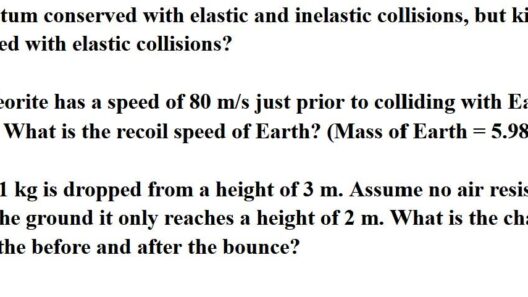Total mechanical energy is a concept in physics that reflects the sum of kinetic energy and potential energy in a system. It is a fundamental principle that plays a pivotal role in understanding various physical phenomena. Engaging with total mechanical energy is not just an exercise in calculations; it unveils the intricate harmony of nature. The conservation of total mechanical energy offers profound insights into the universe’s workings, captivating the minds of both students and seasoned physicists alike.
When evaluating whether total mechanical energy is conserved, there are a few key principles to consider. The first principle is the definition of mechanical energy itself. Mechanical energy encompasses two primary forms: **kinetic energy** (energy of motion) and **potential energy** (energy of position). These energies can interchange, but their total—that is, the sum of kinetic and potential energy—remains unchanged in a closed system where no external forces perform work.
To determine if total mechanical energy is conserved, one must first delineate the system under study. A **closed system** is one in which mass doesn’t enter or exit, and external forces are negligible. Common examples include a swinging pendulum or an oscillating spring. In these scenarios, potential energy transforms into kinetic energy and vice versa, yet the total remains constant.
Let’s consider a pendulum. At its highest point, all the mechanical energy is potential, derived from its elevated position. As it swings down, potential energy is converted to kinetic energy—the energy manifests as the pendulum speeds up. At its lowest point, kinetic energy peaks while potential energy is at its nadir. If air resistance and friction are minimal, the total mechanical energy will approximate conservation—exemplifying the elegance of harmonic motion.
However, real-world systems often involve dissipative forces, such as friction or air resistance, which dissipate energy as heat. In this context, one must take care when asserting that mechanical energy is conserved. Without accounting for these factors, any evaluation may yield inaccurate results. It is crucial to conduct experiments under conditions that minimize energy loss through external interactions.
An effective approach to ascertain energy conservation involves conducting precise measurements of kinetic and potential energy at different junctures of the system’s motion. For instance, using a **kinetic energy formula** (KE = 1/2 mv²) and a **potential energy formula** (PE = mgh) enables physicists to compute the respective energies. Tracking these values over time provides clarity: does their sum remain invariant despite transitions between forms? If significant discrepancies arise, one can infer that energy losses due to external forces have occurred.
Furthermore, employing tools and techniques such as **video analysis** can enhance observational accuracy. By recording the motion of a pendulum and analyzing the footage frame by frame, one can glean precise measurements of height and velocity, leading to an unequivocal calculation of mechanical energy. Such methodologies dispel the ambiguity that sometimes clouds experimental physics.
This interplay of energy forms commonly leads to deeper questions about the nature of energy itself. Why does it behave this way? What principles underpin its conservation? The laws of physics, particularly the **law of conservation of energy**, indicate that energy can neither be created nor destroyed; it merely transforms. This principle not only applies to mechanical energy but permeates through thermodynamics, electromagnetism, and even nuclear physics, leading to a rich tapestry of inquiry.
As one delves deeper, questions surrounding energy’s conservation evoke thoughts on the universe’s fundamental nature. Take celestial mechanics, for example. Planets orbiting stars experience gravitational forces that allow for energy conservation on an astronomical scale. The intricacies of orbits and gravitational interactions elucidate both the beauty and complexity of nature—a realm where total mechanical energy conservation plays a crucial role.
Another notable point of interest lies in chaotic systems, such as double pendulums or certain fluid dynamics situations. These systems can exhibit high sensitivity to initial conditions, leading to unpredictable behaviors. While energy may fluctuate locally within a chaotic system, the total energy remains conserved globally. Thus, exploring such systems not only enhances understanding of mechanical energy but allows insights into the overarching principles of chaos theory.
In the realm of education, the concept of total mechanical energy conservation captivates students, laying foundational knowledge for future inquisitive pursuits. Educators encourage students to engage in experimental physics to witness energy transformation firsthand, catalyzing a profound appreciation for the laws that govern their surroundings. The aesthetic pleasure derived from observing mechanical energy in action can be transformative, often evoking awe and inspiring future generations of scientists.
In conclusion, recognizing whether total mechanical energy is conserved involves evaluating a system’s boundaries, discerning between kinetic and potential energy, and meticulously measuring these energies. The principles of mechanical energy conservation reveal the interconnectedness of various natural laws and phenomena, encapsulating the intrinsic beauty and complexity of the universe. Through both theoretical understanding and empirical investigation, one can forge a deeper connection with the fabric of reality, delighting in the intricate dance of energy that unfolds all around.






